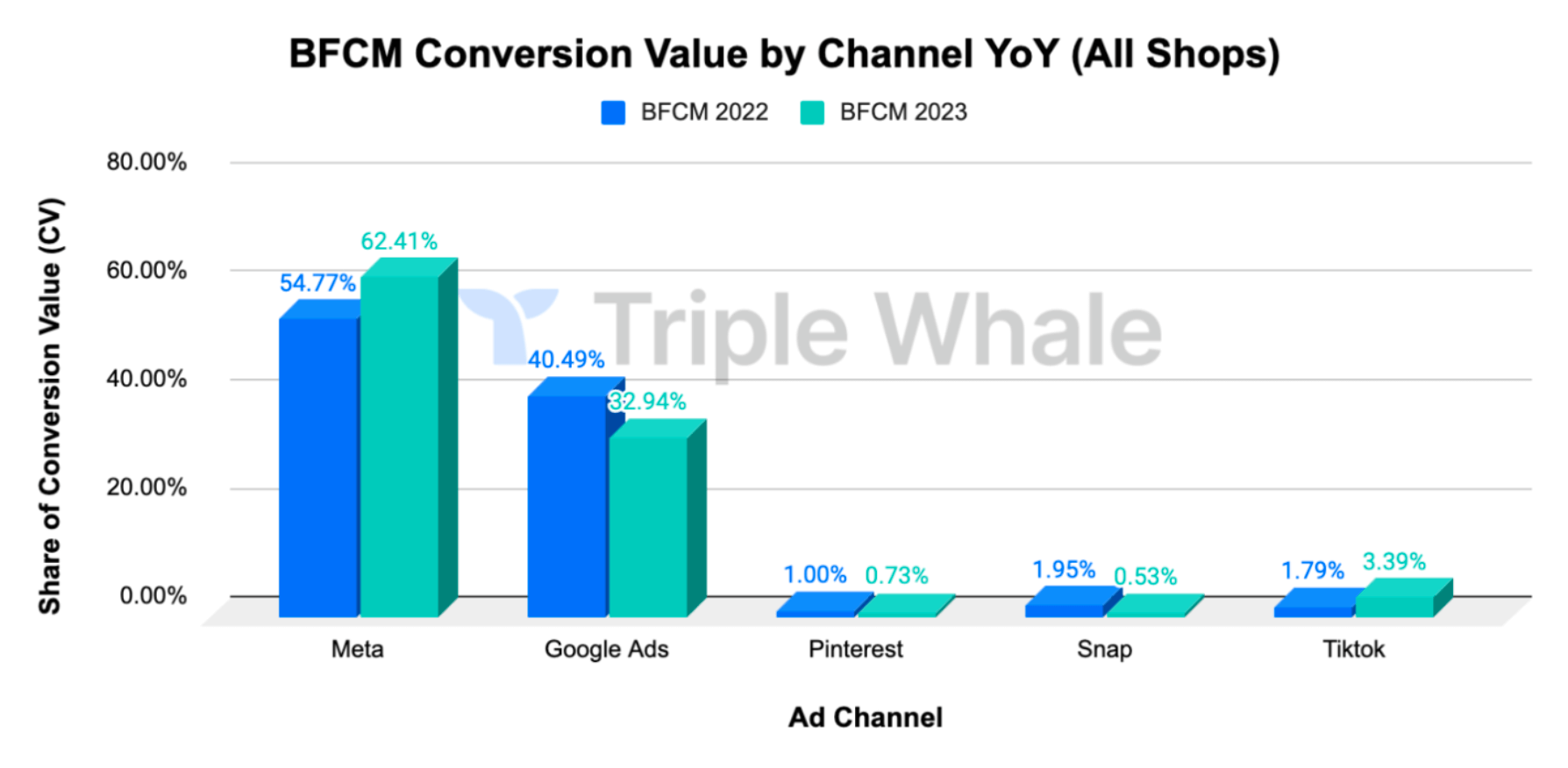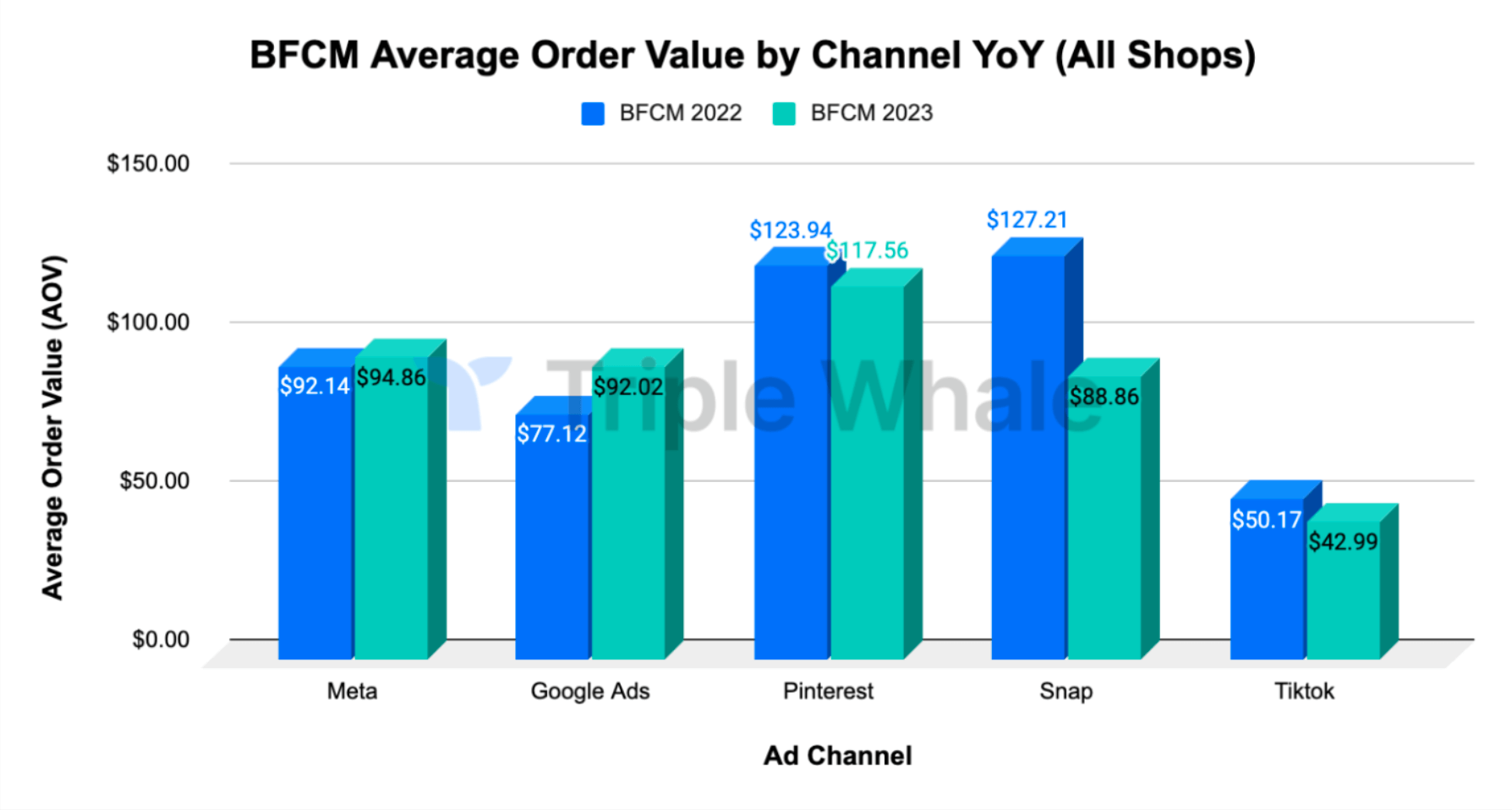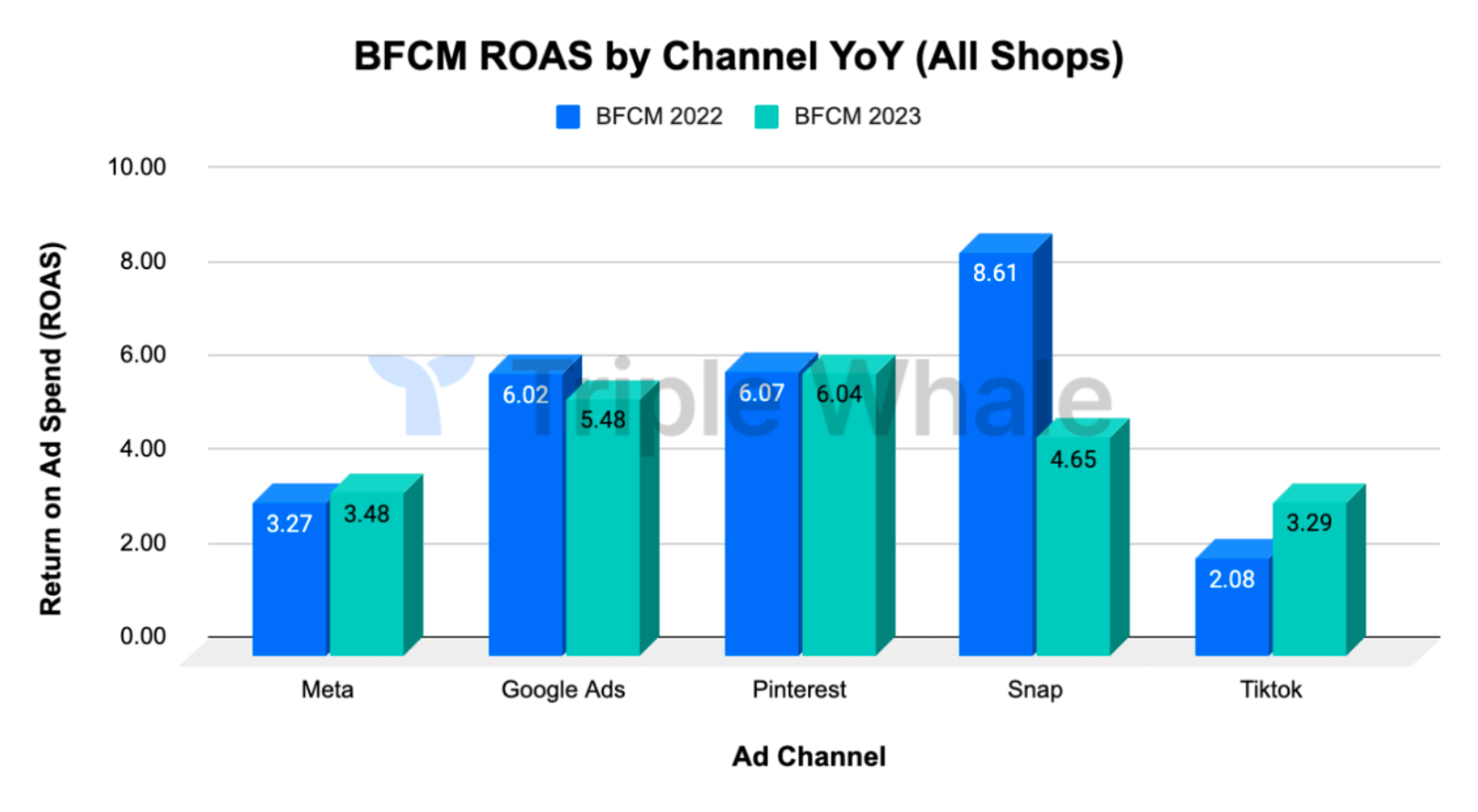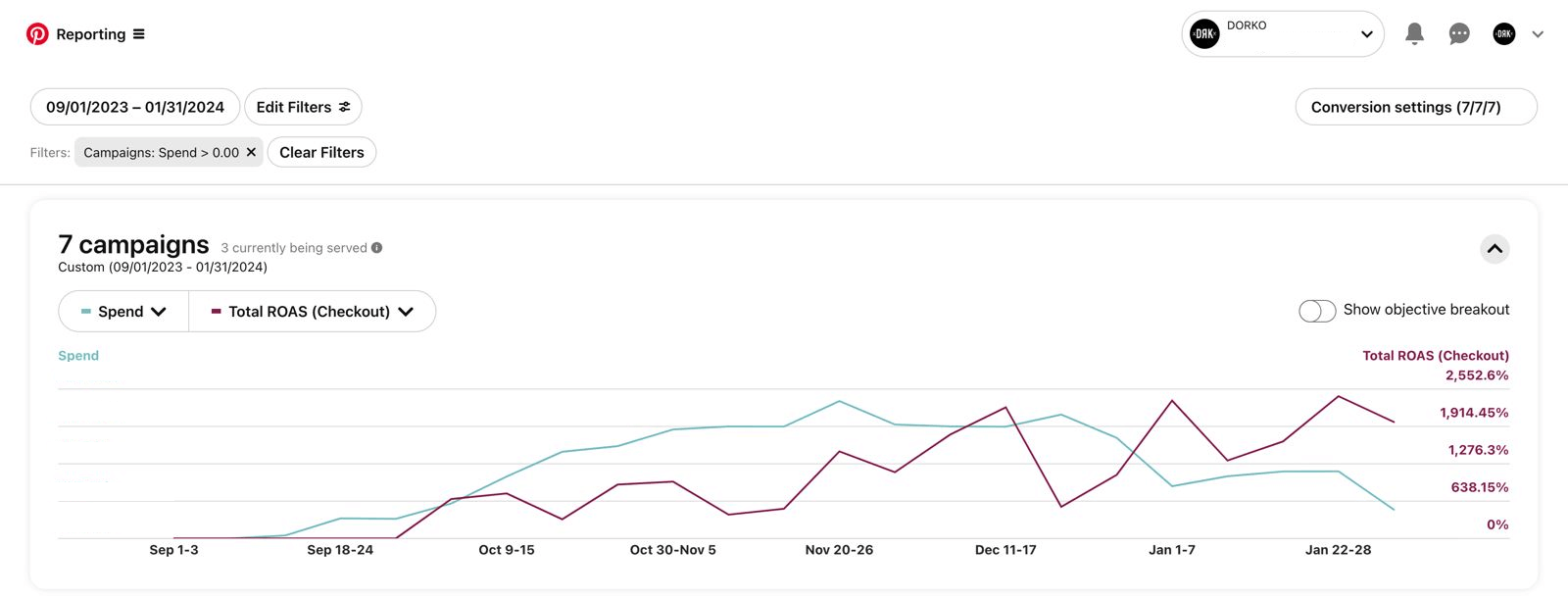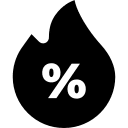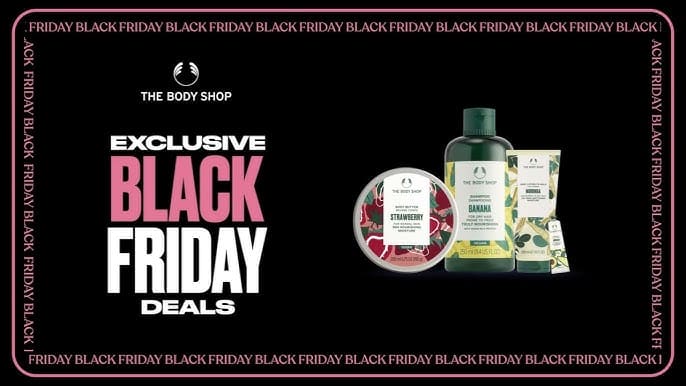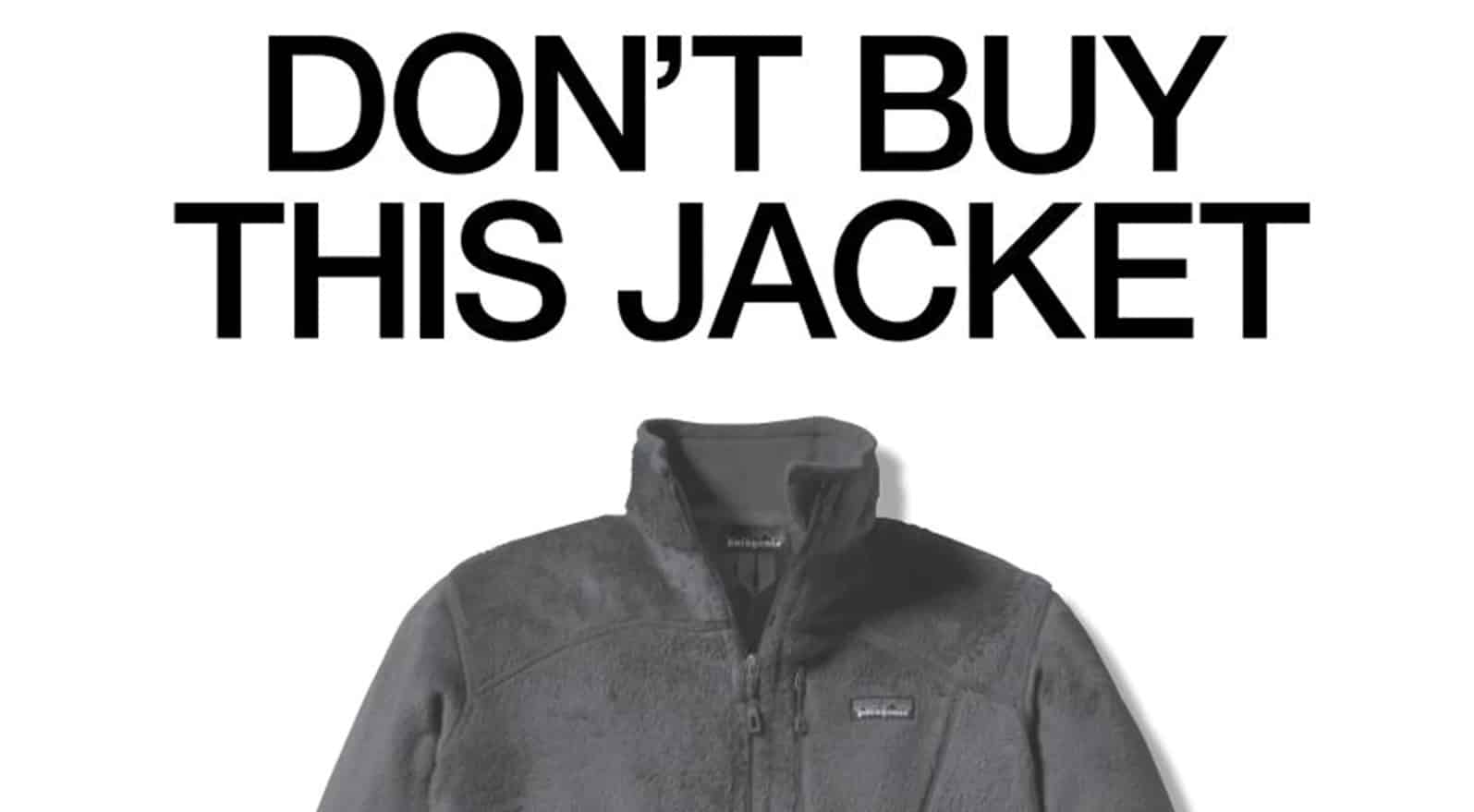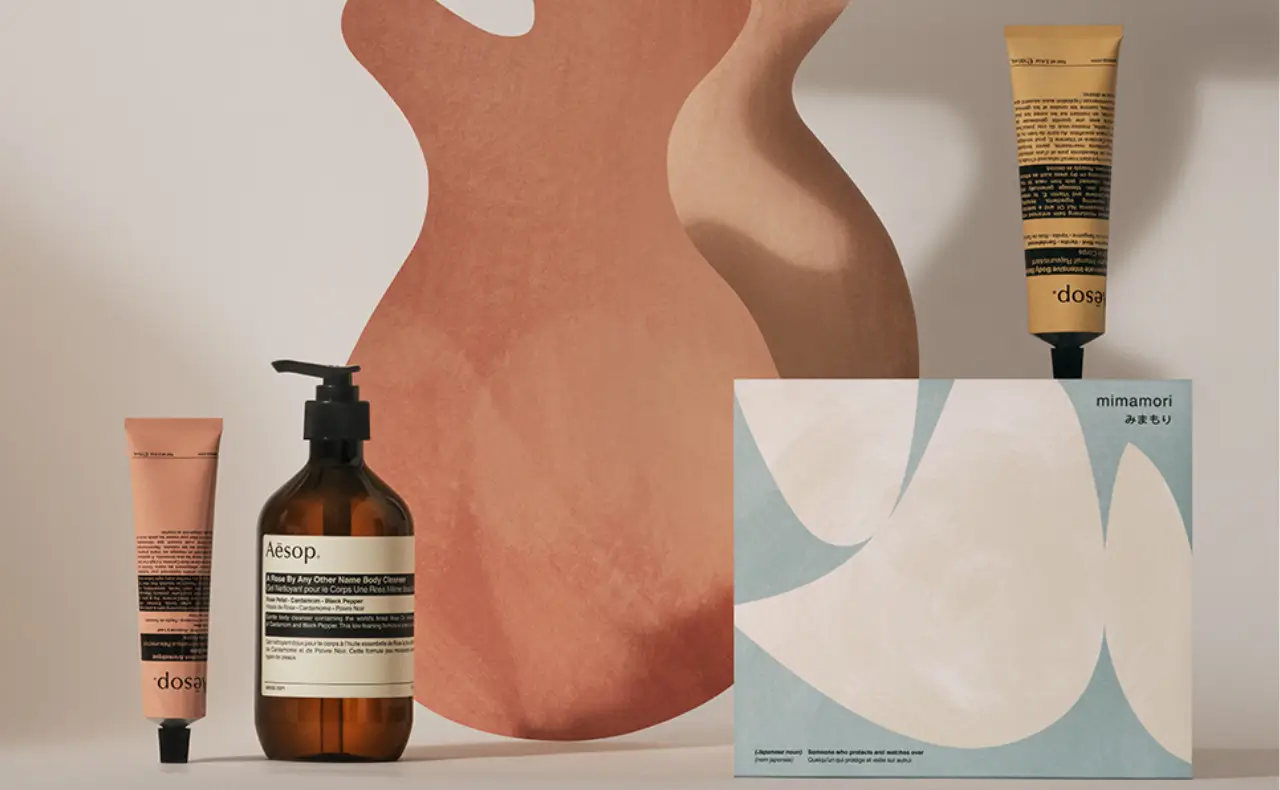During the last few years, Black Friday, which was once only a day, has turned into a week and eventually a month of insane discounts, sales stunts, and aggressive campaigns. At this time, CPMs are on the roof, brands want to earn their Q4 revenue within a week and everybody wants to encourage users to buy what they really don’t need. The BFCM, aka Black Friday Cyber Monday season is at the door, so we thought we write about something different.
Something that can be valuable to lifestyle brands that want to make a difference, want to be unique and build their brands on a clear purpose. We want to show you that you have plenty of alternative choices during the BFCM season and you don’t need to get in the line with everybody else.
BFCM Statistics in General
Each year, Triple Whale reviews the overall performance of the BFCM season and summarizes the analytics of over 11,000 eCommerce stores with $1 billion in sales.
Let’s take a look at the changes in purchase volume, AOV, and ROAS from 2022 to 2023, as well as predictions for this year.
Meta’s Continued Dominance
Meta saw a strong increase in conversion value from 2022 to 2023 (+13.95%). This suggests that it remains a powerful platform for driving sales during the BFCM season. Given that Meta continues to innovate with ad targeting and shopping features (e.g., Instagram Shops), we can expect further growth in 2024, although competition from other platforms might limit its growth potential.
TikTok’s Surge
TikTok’s enormous growth in conversion value (+89.66%) highlights its increasing importance as a shopping platform, particularly among younger (Gen Z & Alpha) audiences. This trend is expected to continue in 2024, with TikTok potentially becoming a major BFCM player, especially if it continues to improve its ad products and e-commerce integrations.
Google Ads Growth
Google Ads saw a significant increase in AOV, suggesting that it has improved in driving higher-value conversions during BFCM. Given this strong performance, 2024 could see continued growth as businesses optimize their paid search and Shopping ads. Google’s ability to target high-intent consumers and its integration with local inventory ads will likely support higher order values again in 2024.
Narrowing TikTok's AOV
- Shifts in Consumer Behavior: TikTok’s user base tends to skew younger, which might lead to smaller average purchase sizes compared to platforms like Meta, where older and more financially established users are more prevalent.
- Product Types: TikTok’s “shoppertainment” strategy often pushes lower-ticket, trend-driven items, which could explain the relatively low AOV compared to other platforms like Pinterest and Meta.
- Market Saturation: As more brands rush to advertise on TikTok, users might be experiencing ad fatigue, resulting in lower engagement or smaller purchases.
A Consistent Performer for Steady Returns
Pinterest’s minimal change in ROAS indicates that it has reached a plateau in terms of ad performance. For 2024, Pinterest’s ROAS could remain relatively stable unless there are major changes in ad features or shopping experiences that drive more engagement and higher-value purchases.
Pinterest Case Study
Discover how Evolut helped a lifestyle client achieve a 25x ROAS on Pinterest by crafting a tailored strategy that maximized brand exposure and conversions. This case study dives into the specifics of our approach, targeting, and creative optimization that led to such remarkable results. See the full story and learn the strategies behind this performance!
Brands Should Shift Focus to Microsoft Ads
As brands continue to reassess their advertising strategies, new data from a Hawke Media and Shopify report highlights that Microsoft Ads (specifically Bing) is emerging as a more effective alternative to Google Ads. According to the report, Bing Ads delivered a 36% increase in ROAS and a 29% increase in CTR (Click-Through Rate) in 2023, showcasing its superior performance in key advertising metrics.
In contrast, Google Ads saw a -8.92% decline in ROAS over the past year, leaving many advertisers grappling with lower returns, rising competition, and increased ad costs. This shift suggests that Bing’s competitive edge is growing, particularly for brands looking to optimize their ad spend while achieving better conversion rates and engagement.
BFCM Statistics in the EU and US Markets
Before we dive into alternative campaign techniques and a purpose-driven approach, let’s take a look at some key statistics from last year’s BFCM season.
European Union
United States
While BFCM presents significant opportunities for retailers to boost their revenue, it also brings along considerable drawbacks, particularly concerning environmental sustainability and consumer behavior.
Environmental Impact
The BFCM season is well-known for creating a huge amount of waste. In the US alone, it is estimated that 23 million kilograms of packaging materials are thrown away during this time. This contributes to overflowing landfills and harms the environment.
The increase in online shopping leads to more transportation emissions. Studies show that shipping related to BFCM adds an extra 2 million metric tons of CO₂ emissions each year in the US and EU combined.
High return rates are another big problem, with 30% of BFCM purchases in the US and EU being returned. This not only causes logistical challenges but also puts more strain on the environment due to additional transportation and packaging.
Alternative Approach to Black Friday Cyber Monday
While traditional BFCM campaigns focus on maximizing sales through aggressive discounts and extensive marketing, there is a growing movement towards more thoughtful and sustainable strategies. These alternative approaches prioritize simplicity, transparency, and purpose, offering a refreshing change for both brands and consumers. Here are some key ideas that lifestyle brands can adopt to stand out during the BFCM season:
Concept of Minimalist Campaigns
Minimalist campaigns embrace the idea of “less is more.” Instead of overwhelming consumers with numerous deals and products, these campaigns focus on quality over quantity. The minimalist approach aims to create a more meaningful and less stressful shopping experience by highlighting essential products and clear messaging.
Key Elements:
- Clarity: Clear and concise communication about what is being offered.
- Focus: Concentrating on a select range of products that truly resonate with the brand’s values.
- Aesthetics: Clean and simple visual designs that enhance the overall message without distractions.
Case Studies of Minimalist BFCM Success
Minimalist BFCM campaigns have proven to be highly effective for brands that prioritize quality, transparency, and customer-centric approaches over sheer volume of discounts and product offerings. Below are three meaningful case studies of brands that successfully implemented minimalist strategies during the BFCM season.
The Body Shop: Ethical Black Friday
The Body Shop, a pioneer in ethical beauty products, has consistently promoted sustainability and social responsibility during major shopping events, including BFCM. Their Ethical Black Friday initiatives focus on conscious consumption and giving back to communities.
Strategy Implemented
- Charitable Donations: The Body Shop pledges a portion of their BFCM sales to various social and environmental causes, encouraging customers to contribute to positive change through their purchases.
- Sustainable Product Promotions: Highlighting products that are cruelty-free, sustainably sourced, and packaged using eco-friendly materials during the BFCM season.
- Educational Campaigns: Running marketing campaigns that educate consumers about the impact of their purchases and the importance of ethical consumption.
Results:
- Positive Sales Impact: By aligning BFCM with their ethical values, The Body Shop attracts customers who are willing to support brands that give back, leading to increased sales and customer engagement.
- Strengthened Brand Loyalty: Customers appreciate the transparency and commitment to social causes, resulting in higher brand loyalty and repeat business.
- Environmental Benefits: Promoting sustainable products and ethical practices during BFCM contributes to The Body Shop’s overall sustainability goals, reducing environmental impact.
Buy Nothing Day Collaborations
While not a traditional campaign, several brands collaborate with Buy Nothing Day to promote sustainability and responsible consumption. These collaborations often involve joint marketing efforts, educational content, and special promotions that align with the ethos of reducing waste and overconsumption.
Notable Collaborations:
- Patagonia and Buy Nothing Day:
- Strategy: Patagonia collaborates with Buy Nothing Day by promoting their repair and reuse programs, encouraging customers to fix rather than replace products.
- Results: This collaboration reinforces Patagonia’s commitment to sustainability and educates consumers on the benefits of extending the life of their products.
- Thinx and Buy Nothing Day:
- Strategy: Thinx partners with Buy Nothing Day to promote their subscription services, encouraging customers to use their products longer and reduce waste.
- Results: Increased awareness about sustainable undergarments and reduced frequency of purchases, aligning with both Thinx’s and Buy Nothing Day’s sustainability goals.
Hillvital: Pioneering Green Friday
For over six years, Hillvital, a trusted name in vitamins and health supplements, has redefined the Black Friday Cyber Monday (BFCM) season with their innovative Green Friday campaign. Unlike the typical discounts stretching over weeks or months, Hillvital chose a different path—focusing their efforts on a single, impactful day dedicated to sustainability and mindful consumption.
Hillvital envisioned a campaign that boosted their sales and also resonated with their target audience of Gen X and Baby Boomers – groups that value quality, transparency, and sustainability. They aimed to create a shopping experience that honored these values, fostering a deeper connection with their customers.
Strategy Implemented
- Focused Discounting: Instead of scattering discounts across a month, Hillvital concentrated their promotions into a single day—Green Friday. This approach created a sense of urgency and exclusivity, encouraging customers to make thoughtful purchases without the overwhelm of endless deals.
- Omnichannel Communication: Hillvital employed a robust omnichannel strategy to ensure their message reached customers wherever they were. From eye-catching social media posts and engaging website banners to personalized email marketing campaigns, every touchpoint was crafted to convey the essence of Green Friday.
- Educational Outreach: Understanding that their audience values informed choices, Hillvital integrated educational content into their campaign. They highlighted the benefits of their products, the importance of immune boosters, and the sustainable practices behind their supplements. This not only educated customers but also reinforced Hillvital’s commitment to quality and transparency.
- Community Engagement: Hillvital fostered a sense of community by encouraging customers to share their health journeys and how Hillvital’s products have supported their well-being. User-generated content and testimonials were showcased across platforms, building trust and creating a supportive network of health-conscious individuals.
Smart Discounting: Boost Conversions Without Cutting Profits
Klaviyo’s 2023 data reveals a powerful truth: bigger discounts don’t always mean more sales. In today’s challenging retail landscape, where margins are tight, relying heavily on discounts can be risky. Consumers love grabbing deals and eagerly take advantage of them. However, brands must be careful not to overuse discounts or offer them too steeply, or they risk hurting their profitability.
Klaviyo’s BFCM insights show that the 20-29% discount range is the sweet spot for maximizing conversions. This optimal bracket delivers the best results for industries like sporting goods, jewelry, home & garden, and hardware & home improvement. By keeping discounts within this range, brands can attract more customers and boost sales without compromising their bottom line.
How to Develop a Minimalist BFCM Campaign
Creating a successful minimalist BFCM campaign involves strategic planning and a focused approach. By prioritizing essential elements and maintaining clarity, brands can achieve significant results without the chaos of traditional discount-heavy promotions. Here’s how to develop a powerful minimalist BFCM campaign:
1. Identifying Core Products
To create a minimalist BFCM campaign, start by identifying your core products—the items that truly represent your brand and resonate most with your customers. This targeted approach ensures that your promotions highlight quality and value rather than quantity.
According to a 2023 Retail Profitability Report by Harvard Business Review, brands that concentrate on high-margin products during sales periods see a 15% increase in overall profitability compared to those that offer widespread discounts.
2. Crafting Clear and Honest Messaging
Clear and honest messaging is the cornerstone of a minimalist BFCM campaign. By communicating transparently, you build trust with your audience and foster long-term customer relationships.
Emphasize the benefits and quality of your products rather than just the discounts. Highlight what makes your products unique and why they are worth the purchase.
The Body Shop excels in transparent communication. During their Ethical Black Friday campaigns, they clearly outline how each purchase contributes to their sustainability initiatives, building trust and encouraging responsible consumer behavior.
3. Leveraging Minimalist Aesthetics in Marketing
Minimalist aesthetics in marketing focus on clean, uncluttered designs that highlight your products and key messages. This approach not only looks sophisticated but also ensures that your audience’s attention is directed where it matters most.
Invest in high-quality images and videos that showcase your products in the best light. Minimalist aesthetics rely on strong visuals to convey quality and elegance.
Aesop, a minimalist luxury skincare brand, uses simple and elegant designs in their marketing campaigns. Their BFCM promotions feature clean visuals and straightforward messaging, aligning perfectly with their brand’s sophisticated and sustainable ethos.
Recap of Minimalist Benefits
By adopting these simplicity-focused strategies, you empower your brand to stand out in the crowded BFCM landscape, attract loyal customers, and drive sustainable growth.
As the BFCM season approaches, now is the perfect time to rethink and reinvent your marketing strategies. By embracing minimalism, you not only differentiate your brand from the competition but also align with the values of today’s conscious consumers. Simplifying your campaigns fosters trust, drives meaningful engagement, and supports sustainable growth.

